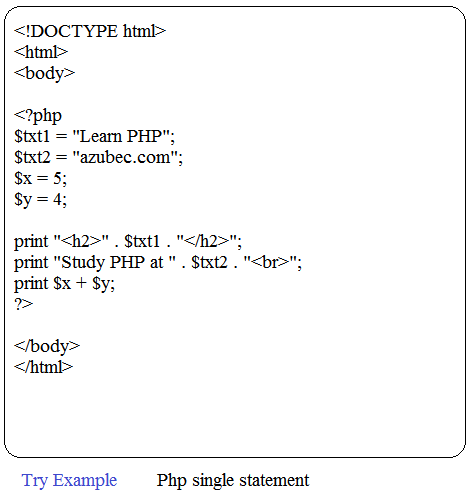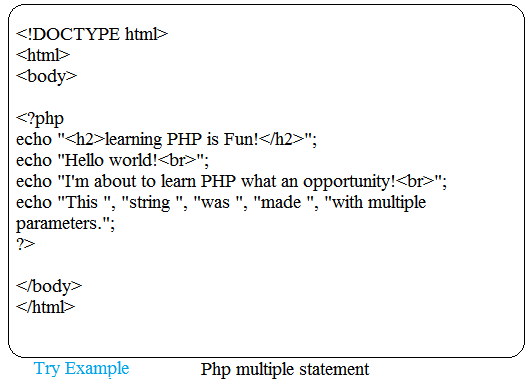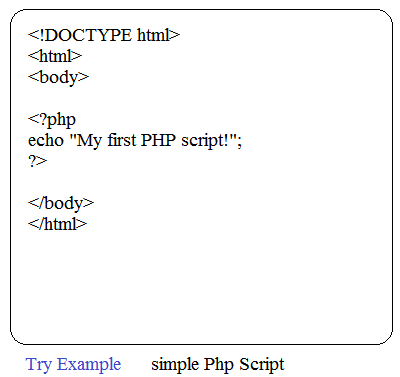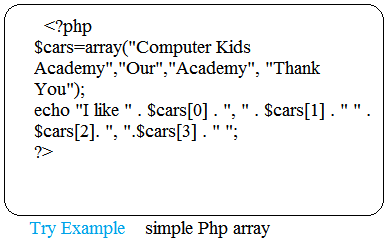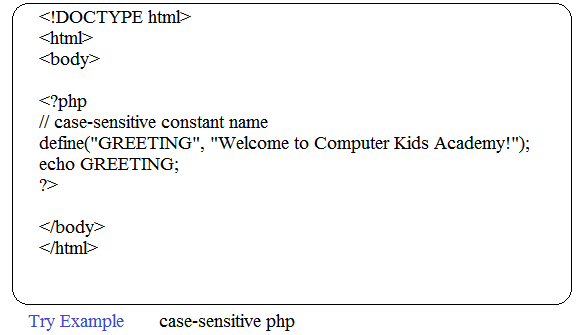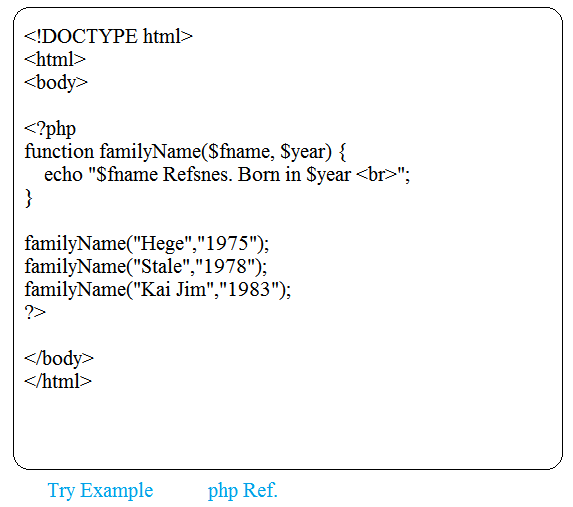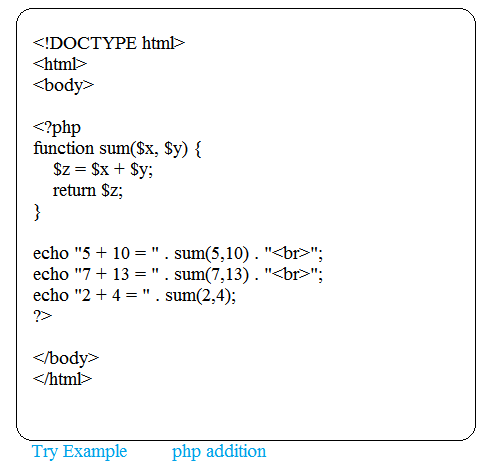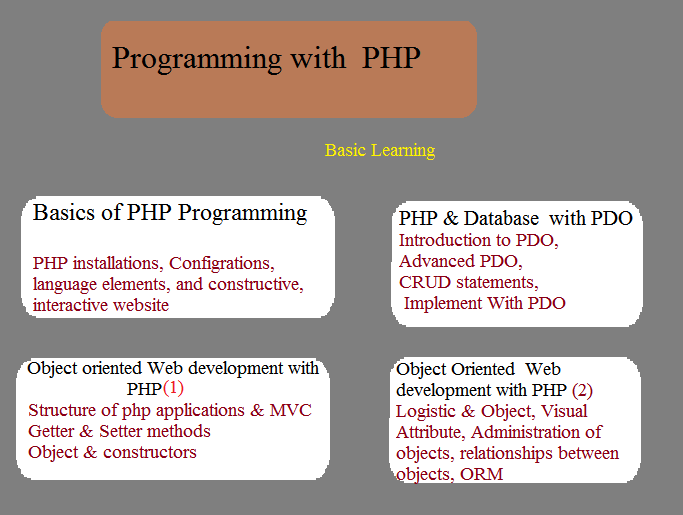
what is PHP?
PHP stands for Personal Home Page (original
name for PHP server-side scripting language)
What is a PHP File?
PHP files can contain:
text, HTML, CSS, JavaScript, and PHP code
PHP code are executed on the server, and the result
is returned to the browser as plain HTML
PHP files have extension ".php"
What Can PHP Do?
PHP can generate dynamic page content
PHP can create, open, read, write, delete,
and close files on the server
PHP can collect form data
PHP can send and receive cookies
PHP can add, delete, modify data in your database
PHP can be used to control user-access
PHP can encrypt data
With PHP you are not limited to output HTML.
You can output images,
PDF files, and even Flash movies.
You can also output any text,
such as XHTML and XML.
Why PHP?
It is used to enhance web pages. With PHP,
you can do things like create
username and password login pages,
check details from a form, create forums,
picture galleries, surveys,
and a whole lot more.
If you've come across a
web page that ends in PHP,
PHP is known as a server-sided language.
That's because the PHP doesn't get
executed on your computer,
but on the computer you requested the page from.
PHP runs on various platforms:
(Windows, Linux, Unix, Mac OS X, etc.)
PHP is compatible with almost all
servers used today (Apache, IIS, etc.)
PHP supports a wide range of databases
PHP is free.
Download it from the official
PHP resource: www.php.net
PHP is easy to learn and runs
efficiently on the server side
my first PHP source code statement
PHP Hello world
The program shown below is a
basic PHP application that outputs the words
"Hello World!"
When viewed in a web browser.


